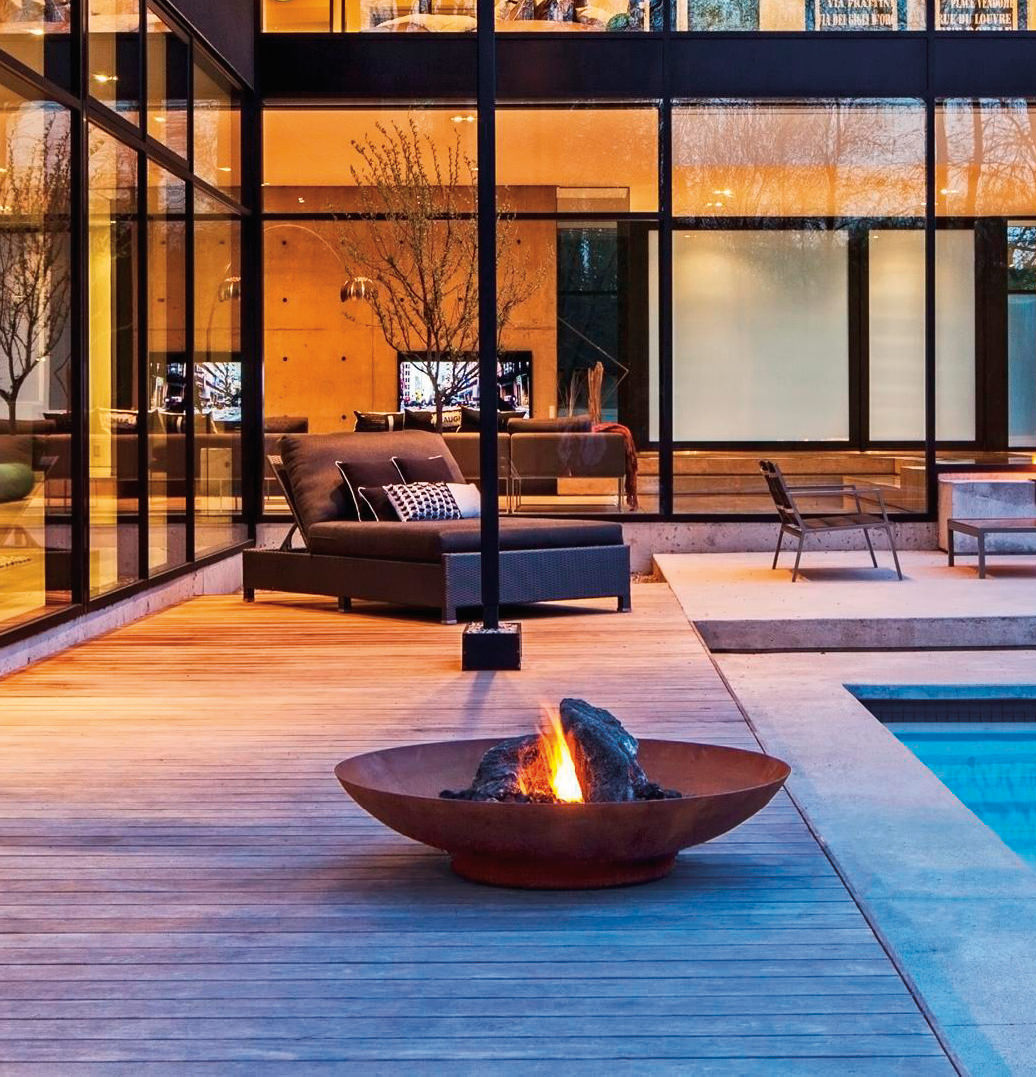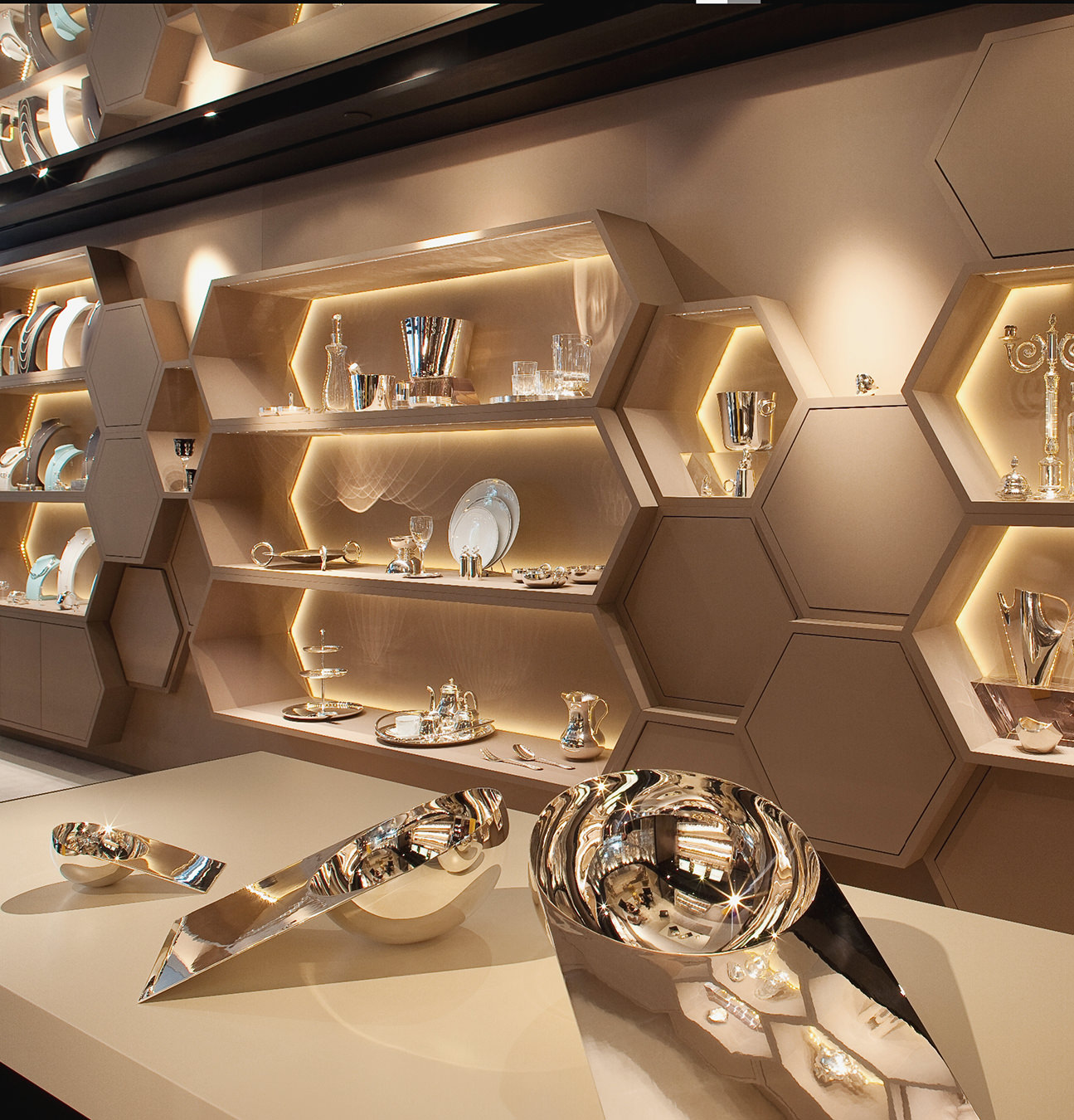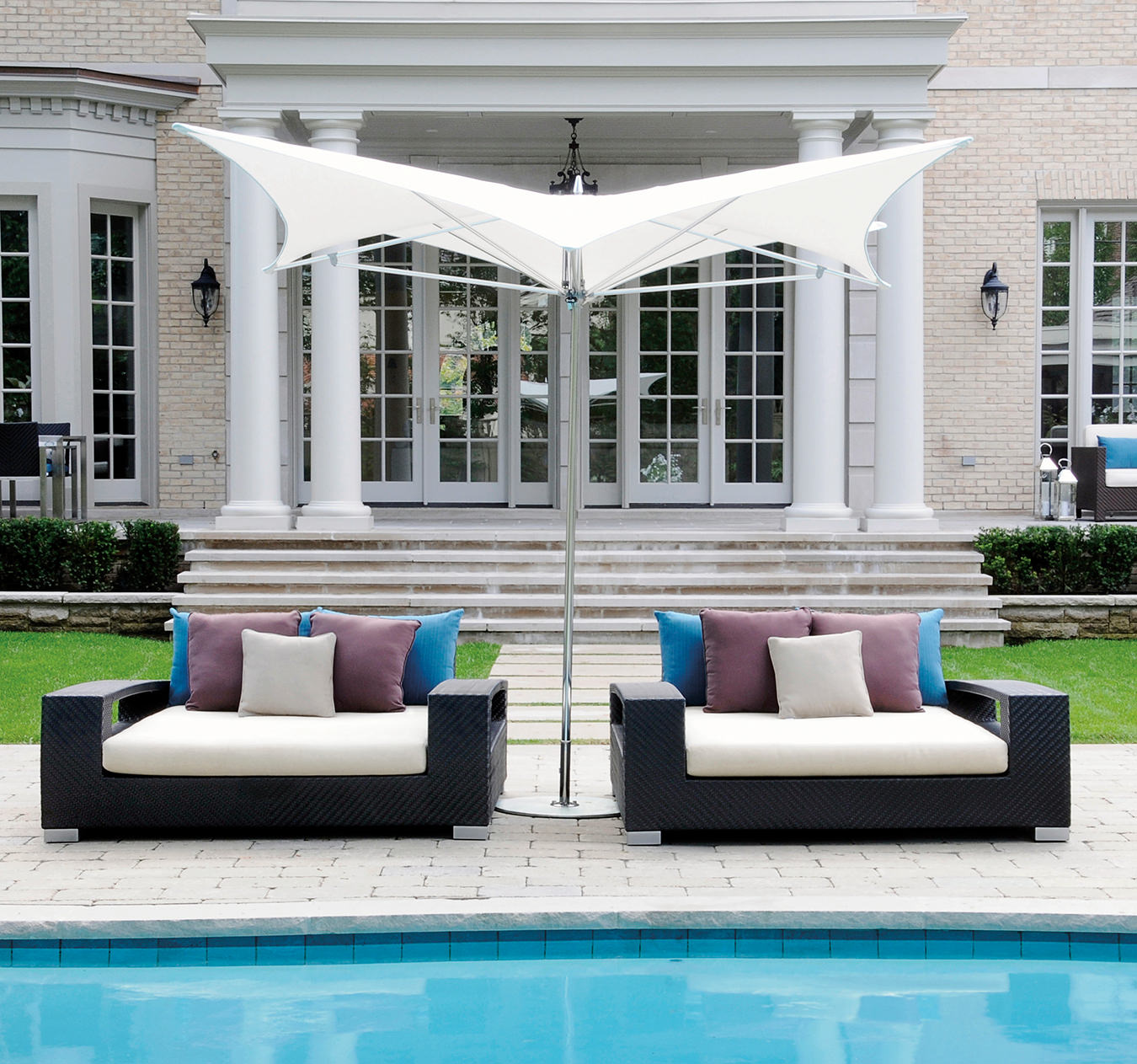-
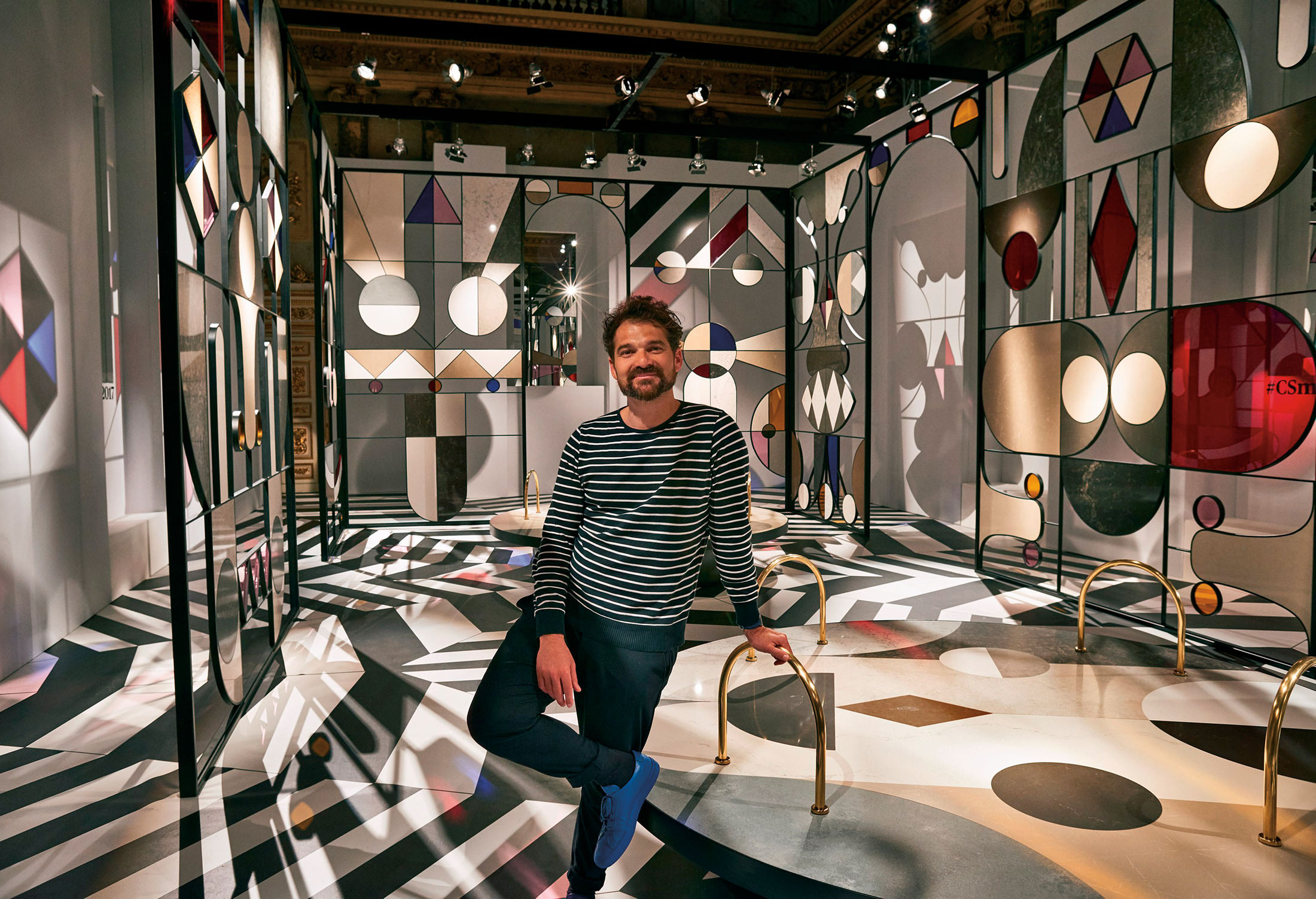
Madrid-born designer Jaime Hayon with his Stone Age Folk installation.
Photo by Tom Mannion.
-
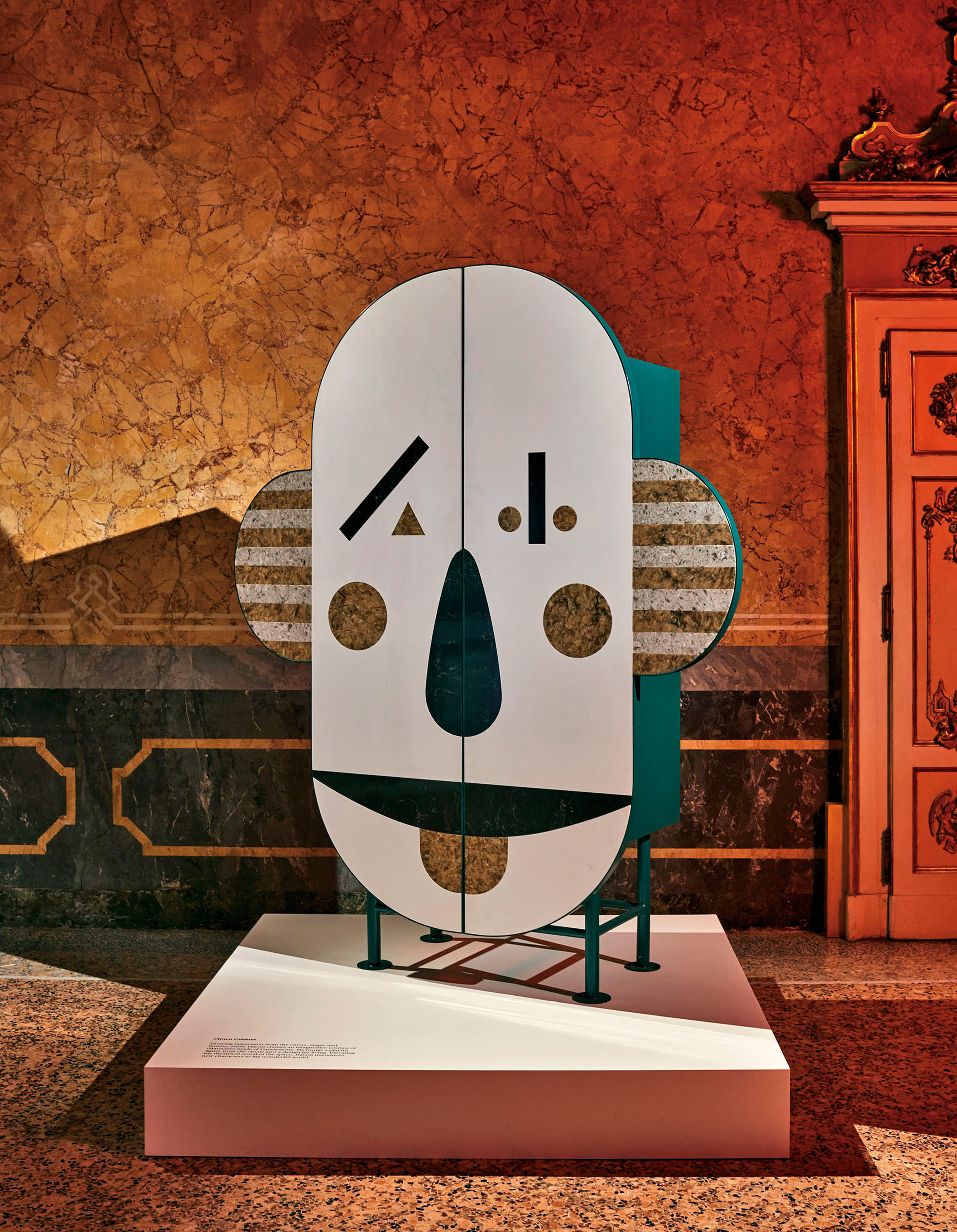
The installation immerses visitors in Hayon’s world, taking the material far from the practical applications it is often associated with.
Photo by Tom Mannion.
-
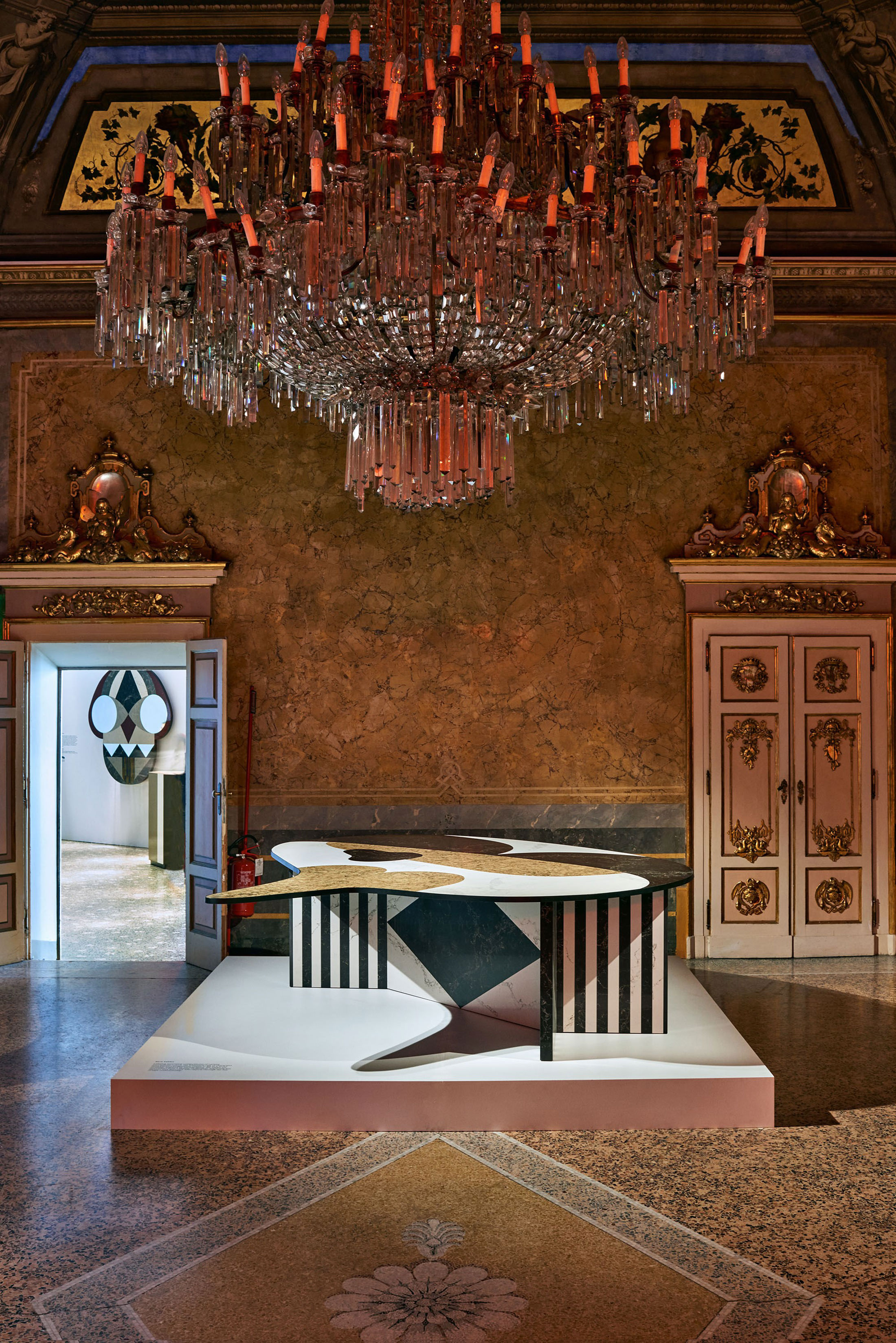
Jaime Hayon’s Stone Age Folk exhibition was a year-long collaboration with Caesarstone.
Photo by Tom Mannion.
-

The exhibition was showcased at the Interior Design Show in both Toronto and Vancouver as well as Fuorisalone in Milan.
Photo by Tom Mannion.
-

Stone Age Folk features graphic black-and-white flooring, spinning brass and quartz carousels, and a clown face armoire.
-
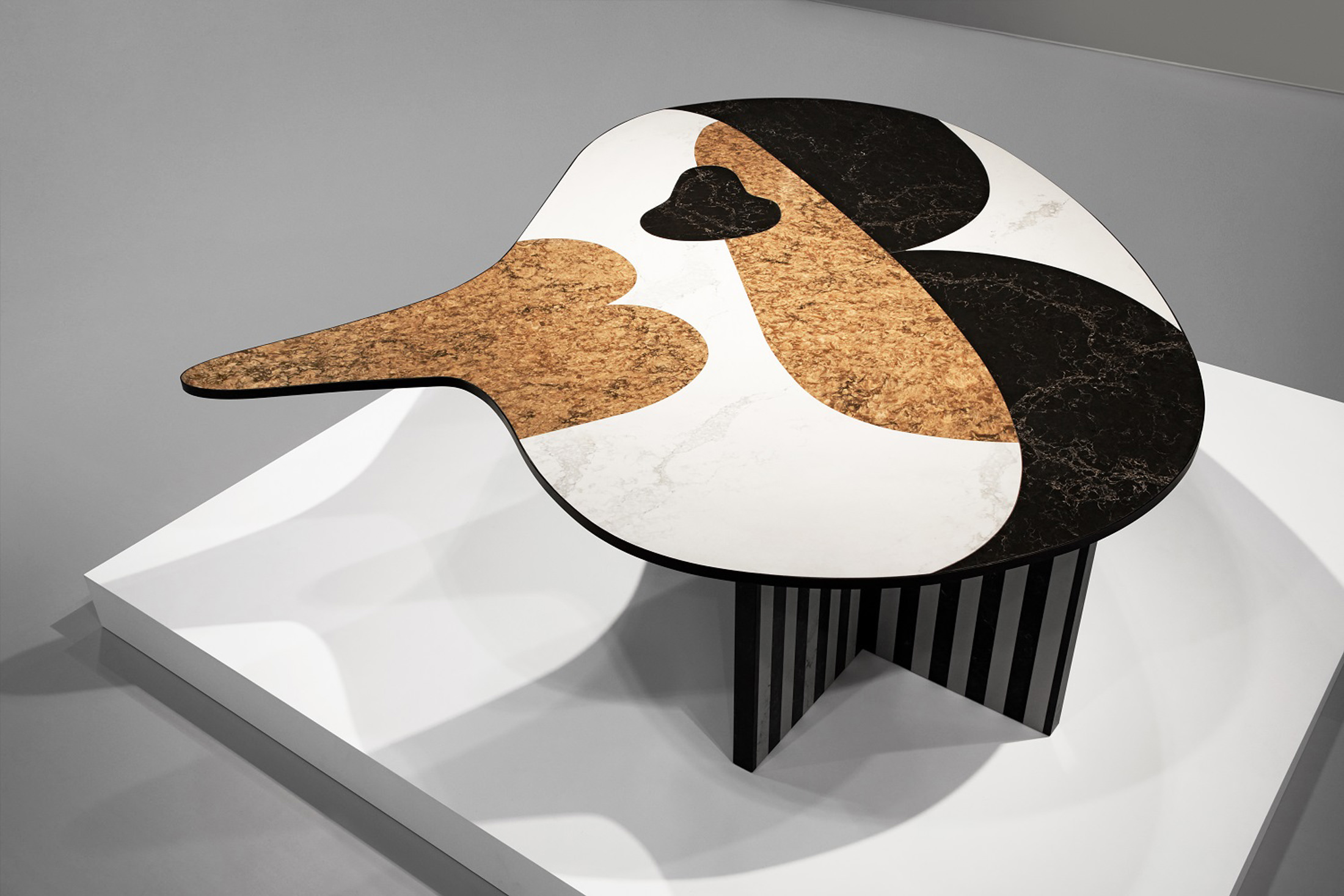
“I think that art should be beautiful, visual, and skillful,” says Hayon.
Design Mind Jaime Hayon
In translation.
In Jaime Hayon’s work, there is a language. The Madrid-born designer speaks through curves (they must be deep), materials (classic), and a theme (always unexpected). Whether working in furniture design with BD Barcelona Design or Fritz Hansen, lighting fixtures with Swarovski, designing the Barceló Torre de Madrid hotel, or whatever project or medium he chooses, Hayon acts as an interpreter, translating every convention into his own curious tongue.
“Whenever I get a commission—a hotel, a restaurant, an installation, or a chair—I always start with, ‘Okay, you tell me what to do and then I’ll forget what you said,’ ” Hayon says, laughing, seated in his installation at the Interior Design Show in Vancouver. “They give you this big brief and everyone is really concentrated on the big ideas, the marketing, and I don’t even read it.”
Armed with a boyish charm—supported by tousled hair, sneakers, and a T-shirt—Hayon’s individualist impulses avoid being read as petulant. His exhibition with Caesarstone, called Stone Age Folk, done in collaboration with his own Valencia studio, was first showcased at the Interior Design Show in Toronto followed by Fuorisalone in Milan in April. The installation immerses visitors in Hayon’s world—graphic black-and-white flooring, spinning brass and quartz carousels, and a clown face armoire—taking the material far from the practical applications it is often associated with. “I just wanted to use the materials in a different way,” Hayon explains, referencing the company’s signature quartz. “The way we typically look at the material is pretty hygienic and pretty boring, if I can say. We often see it in the kitchen, so my idea was to bring it up to my plane, make it more arty and playful,” Hayon says, gently kicking the floor and spinning the quartz carousel for emphasis.
These whimsical, organic, and seemingly effortless creations are what best define Hayon’s work.
Hayon is skilled at combining disparate influences to create a fantasy world like Stone Age Folk, with irreverent aesthetic references like anime and Hungarian folk tales. Of this, Hayon explains that he adds his “codes, which are recognizable. Like, this is my shirt, you can tell.” He reaches back to expose the tag from his collaborative clothing line, Jijibaba. “There should be constants—certain curves, certain shadows, certain colours and proportions.” It’s a winning formula that offers consistent surprises.
In addition to his process, Hayon is also quite literal in his inspiration, which he boils down to identifying a single muse. “What I try all the time to do is get a theme, because creativity has to start from somewhere,” he explains. “After you make something functional—a chair is a chair—you need a theme. You say, ‘My theme is blue, or a circus,’ and you combine that with something surreal, and you will get something original.” When Hayon received a fallen paulownia tree that had been planted by Le Corbusier in the late architect’s Villa Le Lac, he turned the wood into a poetic and touching collection for Cassina in 2015. His theme, uncomplicated, was inspired by the creatures and things that would feel the absence of the historic tree: small birds, birdhouses, and swings.
These whimsical, organic, and seemingly effortless creations are what best define Hayon’s work. Eschewing technology (as much as any industrial designer can), he insists that aesthetic beauty is still at the root of good design and remains in the hand of the designer. “I do work with technology, but I use it in the way that I think is right. I work with 3-D printing machines, things like that, but I don’t let the machine do what I can do with my hands,” he says. “It might be done in 3-D perfect, but then I won’t send it into the market without me touching it, changing it as if it was a sculpture.”
Bridging the once much-wider gap between art and design has always been part of Hayon’s mandate. Conceptually, however, Hayon finds himself in somewhat closer alignment with the classics than his contemporaries. “I think that art should be beautiful, visual, and skillful,” he says. “I don’t like the idea of someone getting lost with some extremely large text.” In Hayon’s work, beauty is interpreted in many ways, but it’s always legible. Nothing is lost in translation.
_________
Never miss a story. Sign up for NUVO’s weekly newsletter.


